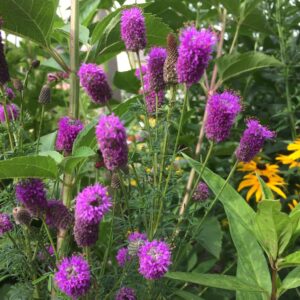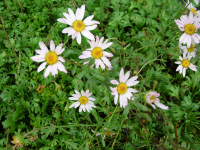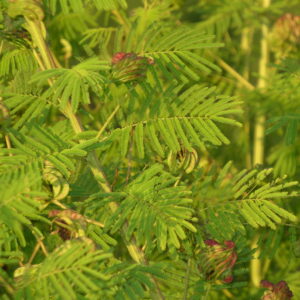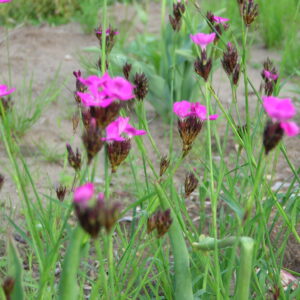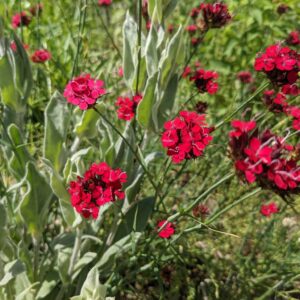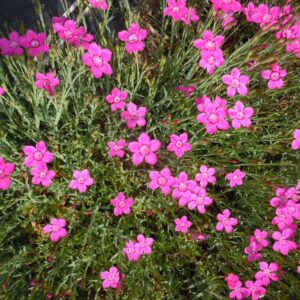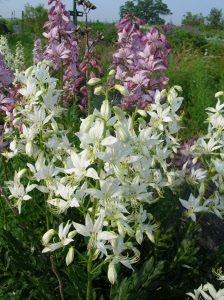Drought, Xeric & Dry Soil Plants
Showing 33–40 of 132 results
-
Dalea purpurea syn. Petalostemon purpurea Violet prairie clover Z 4-9
Vase shaped clump with wands of violet to purple encircling tall coneheads mid-summer
Vase shaped clump with wands of violet to purple encircling tall coneheads mid-summer
Size: 2’ x 18”
Care: full sun in well-drained to moist well-drained soil.
Native: Canada to Texas, Wisconsin native
Wildlife Value: Host for caterpillars of Dogface Sulphur, Striped blue & Mexican blue butterflies. Supports over 80 bee species including endangered Rusty patched Bumble BeesDalea named to honor English botanist Dr. Samuel Dale (1659- 1739.) Chippewa, Meskwaki and Navajo used medicinally – as remedies for heart ailments, pneumonia, diarrhea and measles. Comanche and Lakota chewed the root like gum, for its sweet taste. Sioux combined it with Amorpha canescens, Leadplant to ambush bison. Sioux also treated fevers and stomach disorders with an infusion made from the plant. Pawnee made brooms from the flexible stems. 1st collected by French botanist André Michaux (1746-1802) who spent 11 years in America collecting hundreds of new plants.
-
Dendranthema weyrichii syn. Chrysanthemum weyrichii Alpine daisy Z 4-8
Pink or white daisies all summer and fall
OUT OF STOCK
Pink or white daisies all summer and fall. One of the best for groundcover, front of border or rock garden plant.
Size: 6” x 18”
Care: sun in well-drained soil. Drought tolerant.
Native: East Asia & eastern RussiaCollected before 1891
-
Desmanthus illinoensis Prairie mimosa, Illinois bundleflower Z 5-9
This legume bears round heads of frilly white flowers that turn to interesting spherical seed pods persisting all winter.
This legume bears round heads of frilly white flowers that turn to interesting spherical seed pods persisting all winter.
Size: 4’ x 3’
Care: sun in moist well-drained to dry soil. Looks like a shrub but is a perennial.
Native: Ohio to Florida and west to New Mexico and all states in between
Wildlife Value: Seeds are food for birds including the Ring-Necked Pheasant, Bobwhite Quail, and Greater Prairie Chicken.Desmanthus is Greek meaning “bundle flower” because the bunched flowers looked like a bundle. Pawnee, Sioux, Omaha & Ponca children used seed pods with dried seeds as rattles. Pawnees relieved itching with the boiled leaves. Sioux ate roasted seeds. Collected by French planthunter André Michaux (1746-1803) who spent 11 years in the US collecting plants
-
Dianthus carthusianorum Clusterhead PinkDianthus carthusianorum Carthusian pink, Clusterhead pink Z 5-9
Deep reddish pink flowers atop wiry stems from June until frost
Rosy carmine pink flowers atop wiry stems from June until frost
Size: 16" x 8"
Care: sun in moist well-drained soil.
Native: Central and southern Europe
Wildlife Value: attracts hummingbirds. Deer resistant.The common name “pink” is from “pinct” referring to the jagged edge of the petals. The word “pink” referring to the color, came from the fact that most of the Dianthus are pink. This species may have come into gardens with the Carthusian monks in the 1100’s.
-
Dianthus cruentus Blood pink Z 5-9
Small but eye-catching carmine flowers held high on a leafless stem above basal foliage. Blooms in late spring-early summer
Small but eye-catching carmine flowers held high on a leafless stem above basal foliage. Blooms in late spring-early summer
Size: 2-3’ x 6-9”
Care: sun in moist well-drained soil
Native: Balkans
Wildlife Value: Attracts bees & butterfliesFirst described in Spic. Fl. Rumel. 1: 186 1843.
-
Dianthus deltoides Maiden pink Z 3-9
May - June and longer if deadhead bright pink or white
May – June and longer if deadhead, bright pink or white
Size: 8”x 12”
Care: Full sun well-drained soil, slightly alkaline
Native: Scotland to Norway
Awards: England’s Royal Horticultural Society Award of MeritDeltoides refers to the inverted V-shaped pocket at the base of the petals. D. deltoides 1st identified in 1671 by Swiss botanist Gaspard Bauhin (1560-1624) in Pinax theatri botanici, a landmark of botany, describing and classifying some 6,000 plants.
-
Dianthus pinifolius Pineleaf garden pink Z 4-9
Crimson clusters on wiry stems high above narrow-leaved, glaucous foliage, blooming in late spring to early summer
Crimson clusters on wiry stems high above narrow-leaved, galucious foliage, blooming in late spring to early summer
Size: 12” x 6”
Care: sun in moist well-drained to well-drained soil
Native: Balkan Peninsula & RomaniaDescribed before 1796.
-
Dictamnus fraxinella syn. D. alba Gas plant, Burning bush Z 3-9
Magestic white or pink spikes of flowers in early summer, glossy, lemon-scented leaves
Magestic white or pink spikes of flowers in early summer, glossy, lemon scented leaves.
OUT OF STOCK
Size: 2-3' x 2' slow growing
Care: full sun to part shade in well-drained soil.
Native: Europe
Wildlife Value: Host for Giant Swallowtail caterpillars. Rabbit & deer resistant.
Awards: England’s Royal Horticultural Society Award of Merit.Dictamnus is from the mountain Dicte, located in Crete. Popular Elizabethan cottage garden plant since the late 1500’s. English herbalist John Gerard (1545-1612) called it “gallant.” Grown in the Eichstätt Garden, the garden of Johann Konrad von Gemmingen, prince bishop of Eichstätt in Bavaria, c. 1600. Grown by Jefferson at Monticello in the “center of the NW shrub circle,”1807. The roots used medicinally “resisting purification and poison.” Gardeners’ Dictionary, 1768. Once established very long-lived plant, “known to stand on the same place for fifty years still bearing healthy blooms.” The Garden Feb 19, 1876.

